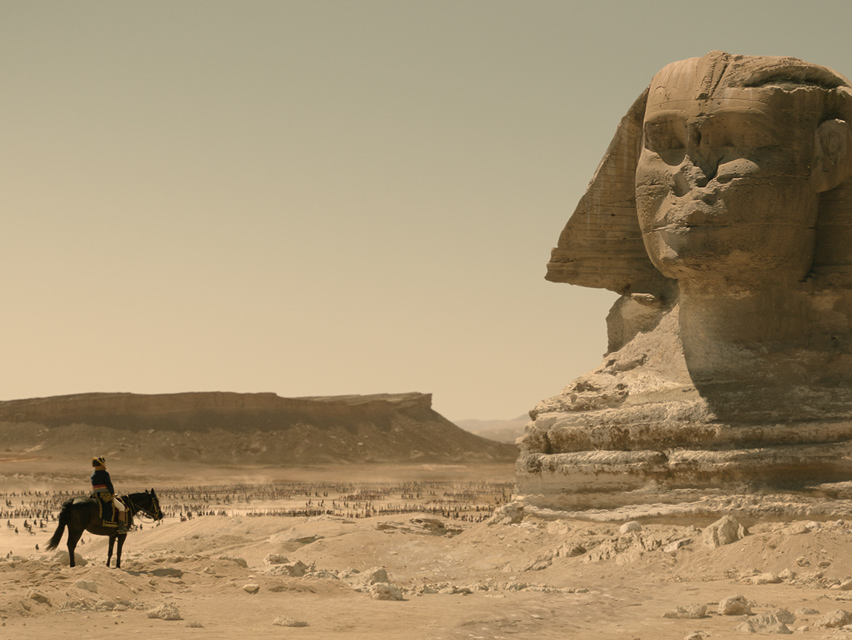Be the first to know — Get Outpost's monthly newsletter for news, tips and job opportunities.

News
Head of VFX Richard Clegg discusses Napoleon with Art of VFX
2 January 2024
Outpost Head of VFX, Richard Clegg, sat down with Art of VFX to discuss the team's work on Ridley Scott's latest historical epic, Napoleon
Outpost had the opportunity to work on several key story beats in Scott's latest film, including Napoleon’s invasion into Egypt, his coronation, a sequence at Château de Malmaison and the Cossack ambush and subsequent fighting.
Talking to Vincent Frei at Art of VFX, Head of VFX / VFX Supervisor Richard Clegg revealed how he and the team brought Napoleon's story to life. Read a snippet of this interview below, or head over to Art of VFX for the whole conversation.
How did you and Outpost VFX get involved on this show?
Many members of our senior team here in Montreal have worked closely with Overall VFX Supervisor Charley Henley in the past and it was really great to reconnect with him on this show. He came to us for our environment and crowd expertise as a lot of that kind of work was required for the film.
How was the collaboration with director Ridley Scott and VFX Supervisor Charley Henley?
It was great! Ridley is a fantastic director for VFX teams to work with – he has a lot of experience across a diverse array of genres and a very precise idea of what he wants from every shot. Charley clearly has Ridley’s confidence. That, combined with Charley’s attention to detail and extensive efforts to provide great material for vendors like us, made the whole process smooth and a lot of fun.
What was their approach and expectations about the visual effects?
As I’ve mentioned, Ridley has a very clear idea of what he wants. One of our sequences was set in Egypt and featured the Great Sphinx of Giza and Pyramids. Ridley was in love with Jean-Leon Gerome’s “Bonaparte Before the Sphinx” painting and used that as inspiration and a compositional goal to hit. Charley provided some great post-vis for the pyramids to guide us and allow us to hit the ground running. We then took these ideas and tweaked the composition to get as much geographical accuracy as possible. The expectations were obviously that everything needs to look photoreal. This is a historical drama and so it’s important to keep the audience in the moment and push for authenticity.
Can you elaborate about the creation of the pyramids and the Sphinx?
The Sphinx shot was compositionally based on the famous painting “Bonaparte Before the Sphinx”, which Ridley loved. The pyramid shot compositions were based on some post vis that Charley had created. The plates were shot out in Morocco and our challenge was taking all the ingredients we were given, pushing for geographical accuracy and keeping a sense of scale and then adding crowd into the backgrounds to significantly multiply the very small number of extras captured in camera. For all the shots we built 3D geometry that we then lit and rendered, then finished off with some DMP on top of the CG renders to add extra weathering and other details.
What was the main challenge with the environments work?
Scale! The shots are very wide, so getting the right amount of detail into them was important. We also wanted to push for as much accuracy as possible. We took satellite data from the real location as our base then tweaked the camera framing and landscape geometry slightly to get the desired composition.




